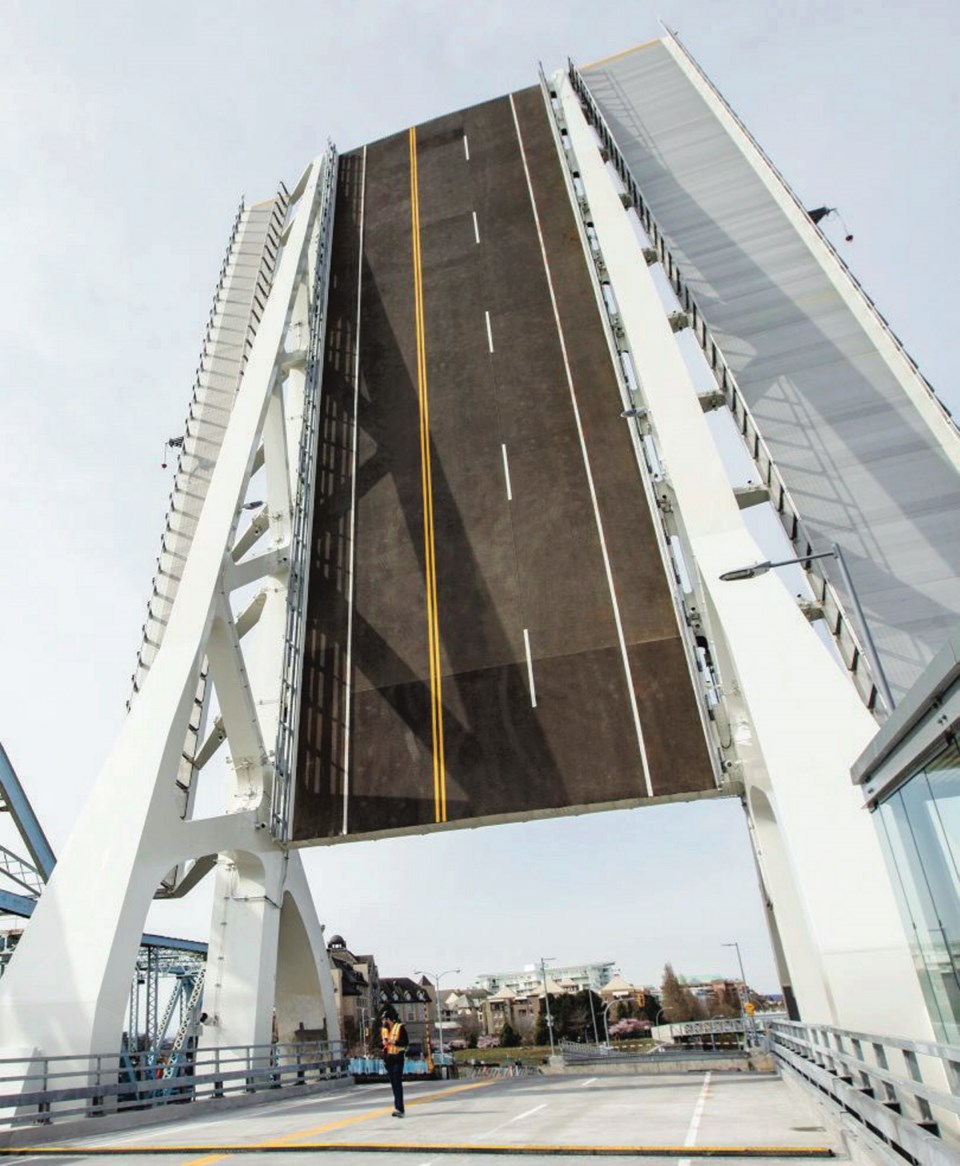Some motorists driving over the new Johnson Street Bridge have been wondering “Why only three lanes?”
Jonathan Huggett, bridge project manager, has an explanation. The old bridge also had three lanes and the decision was made, early on, to stand pat, he said.
“That was a decision made a long time ago,” Huggett said in an interview Monday. “The city council didn’t want to increase the amount of blacktop open to ordinary vehicles.”
The new bridge officially opened Saturday, drawing to a close an eight-year process of political debate, design and construction.
Huggett said one reason designers stuck with only one lane coming into the core was a concern more cars would become snarled on downtown streets, with their stop signs, traffic lights and other obstructions.
“Downtown can only absorb so much traffic,” he said. “You don’t want to load it up any more than the streets can absorb.”
“I’m not even sure opening two lanes inbound would have bought you anything,” said Huggett. “At some point you will hit the ordinary city streets and the traffic lights and everything else.”
Meanwhile, two lanes out will allow people to leave downtown a little more quickly.
The new bridge also has lanes for cyclists and pedestrians.
Huggett said he has also heard arguments against the three lanes of traffic, saying there should only be two.
“There are a lot of people saying ‘Why three and not only two?’ and ‘We don’t want any more cars in the downtown area,’ ” he said.
“A lot of people want to concentrate on bicycle and pedestrians and a lot of other people say: ‘Let’s have more cars downtown,’ ” said Huggett. “There is always that sort of tension.”
The project, originally estimated at $63 million in 2010, is ending up costing more than $105 million.
Construction delays, including re-manufacturing of steel components, also meant the bridge was completed more than two years behind schedule.



